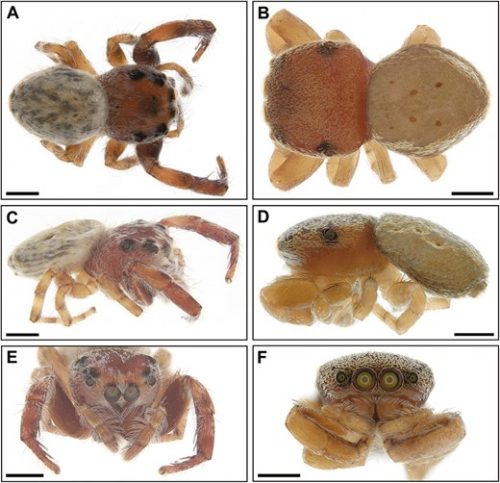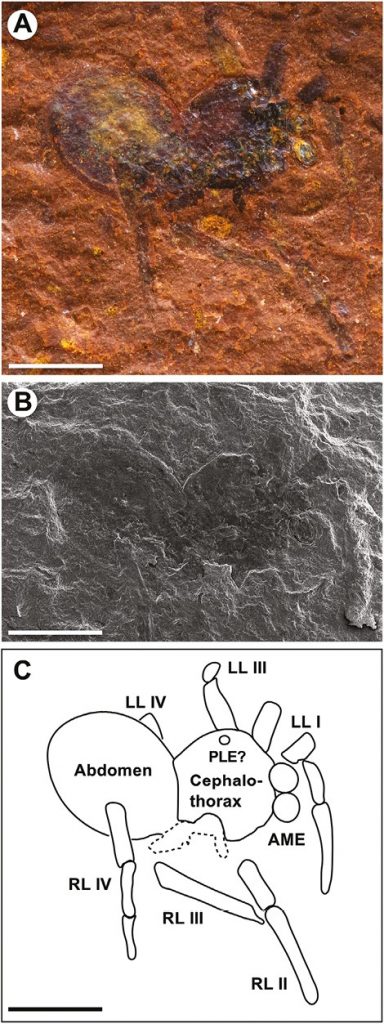I’m used to seeing spectacularly pretty Australasian jumping spiders, and this one, the genus Simaetha, isn’t exactly dazzling.

Australian representatives of the two extant Simaethina genera: A, C, E, Simaetha sp. (female); B, D, F, Simaethula sp. (female). Specimens are shown in dorsal view (A, B), lateral view (C, D) and frontal view (E, F). Scale bars: 0.5 mm (B, D, F), 1 mm (A, C, E).
This one, though, has the excuse that it’s between 11 and 16 million years old. It isn’t that old — I’d expect that the planet had lot of jumping spiders during the miocene — but it’s nice to seen an example from that period.

Simaetha sp. indet. (AM F.161027). Only known specimen: A, light microphotograph. B, scanning electron micrograph. C, morphological interpretation of light and electron micrographs. Abbreviations: LL, left leg; RR, right leg; AME, anterior median eye; PME, posterior median eye. Scale bars: 0.5 mm.
It’s also impressive that they could sort out what was what in the squashed bits of that fossil.


I’m always amazed at how much we can find in fossils. And then I look at my compost pile and wonder at how quickly everything rots away.
I’m sure you must have seen all the pretty jumping spider pics, but just in case…
We were recently in Geraldton Western Australia, and stumbled on this exhibit of Maria Fernanda Cardoso: Spiders of Paradise. 4′ high photos composed of 1000’s of microscope images of tiny tiny spiders that are gorgeous! https://www.mca.com.au/exhibitions/maria-fernanda-cardoso-spiders-of-paradise/
Me, seeing pictures: Aw, cute!
Me, seeing fossil: Aw, poor baby…! 😭